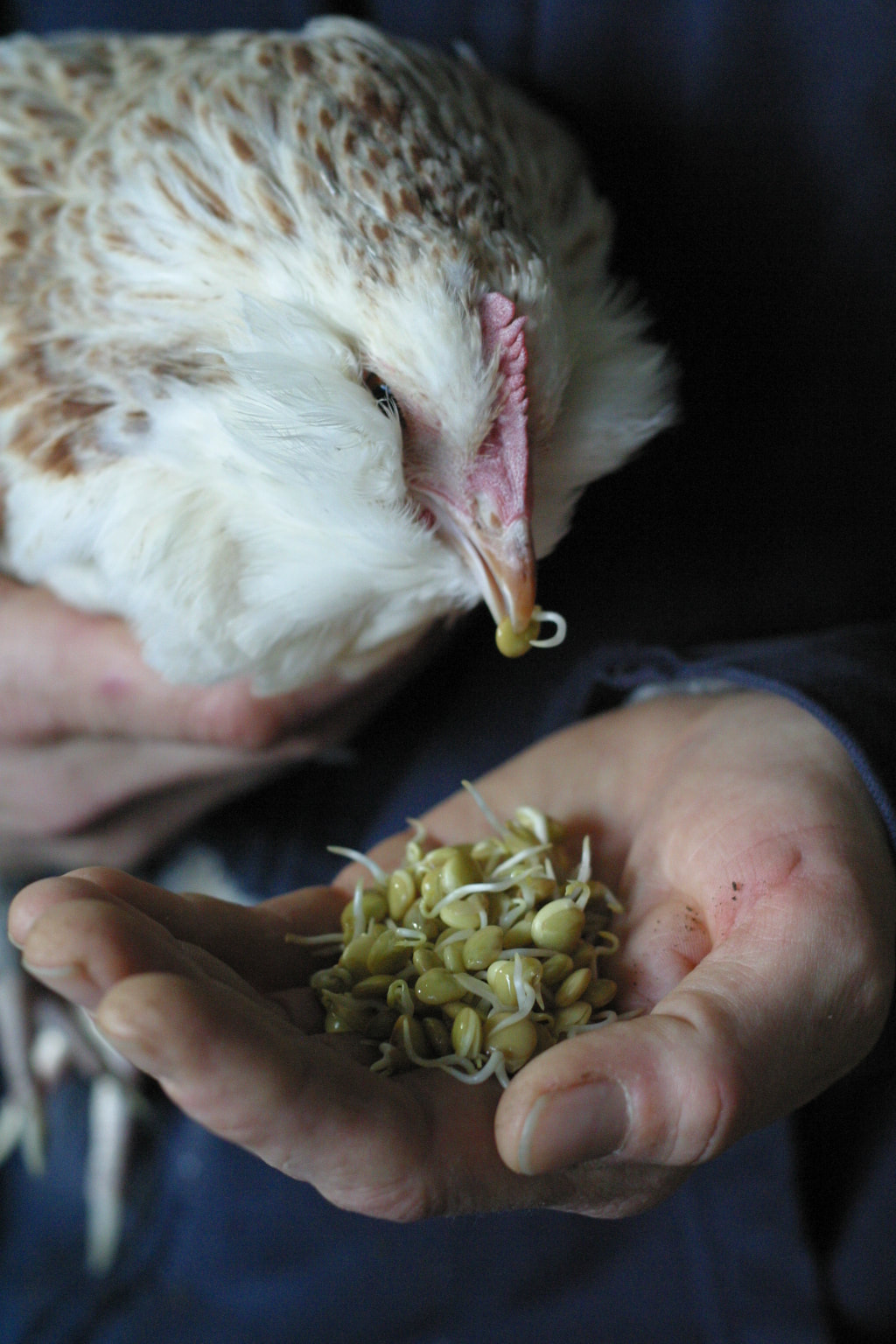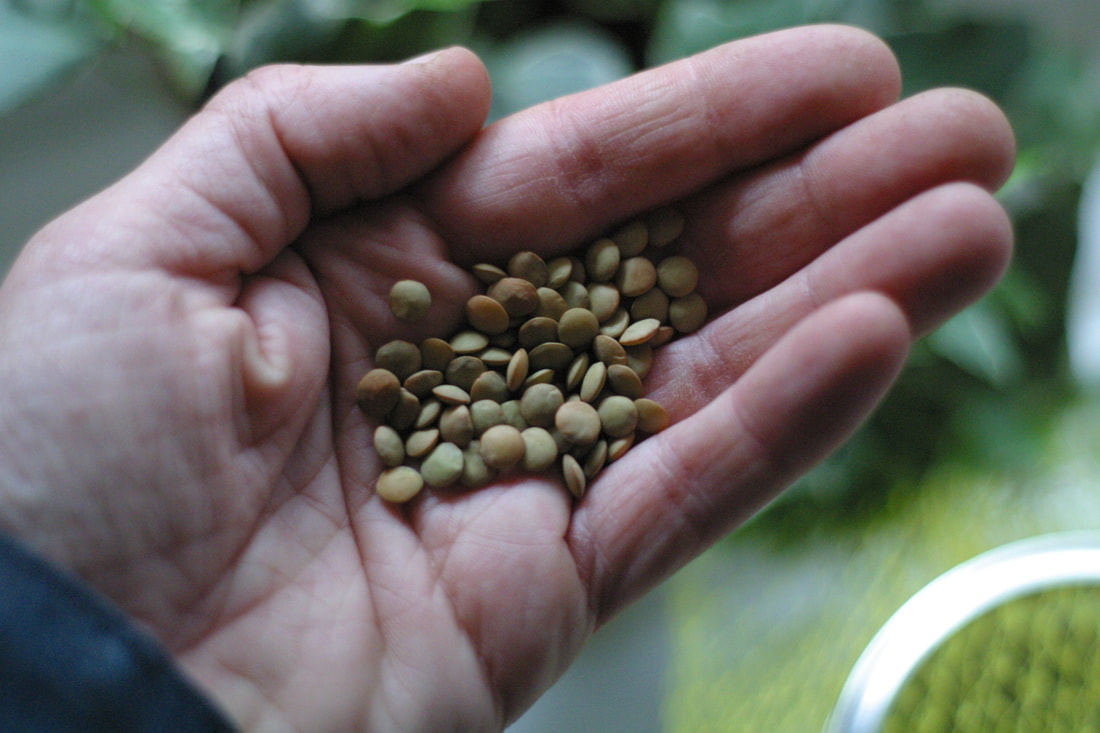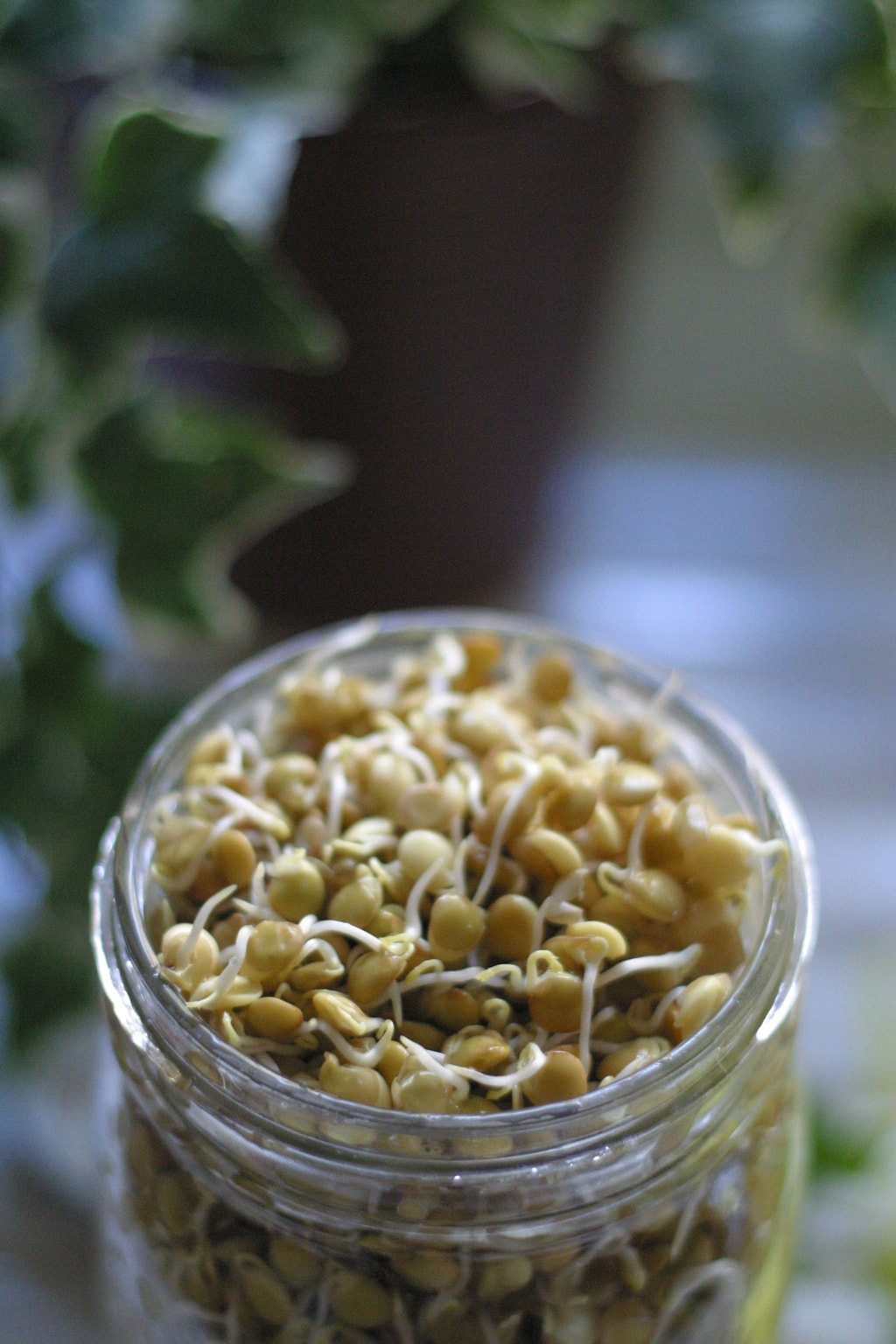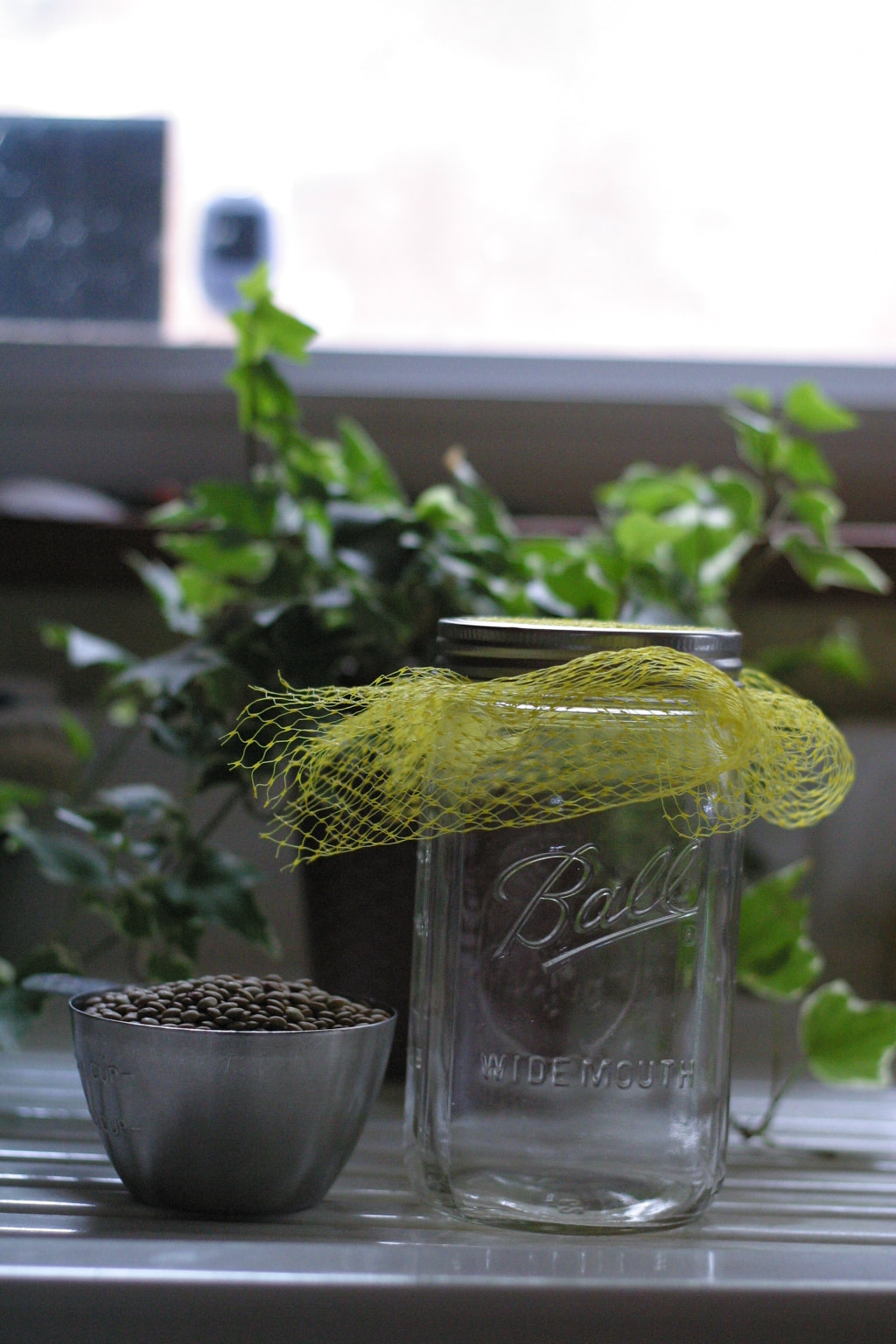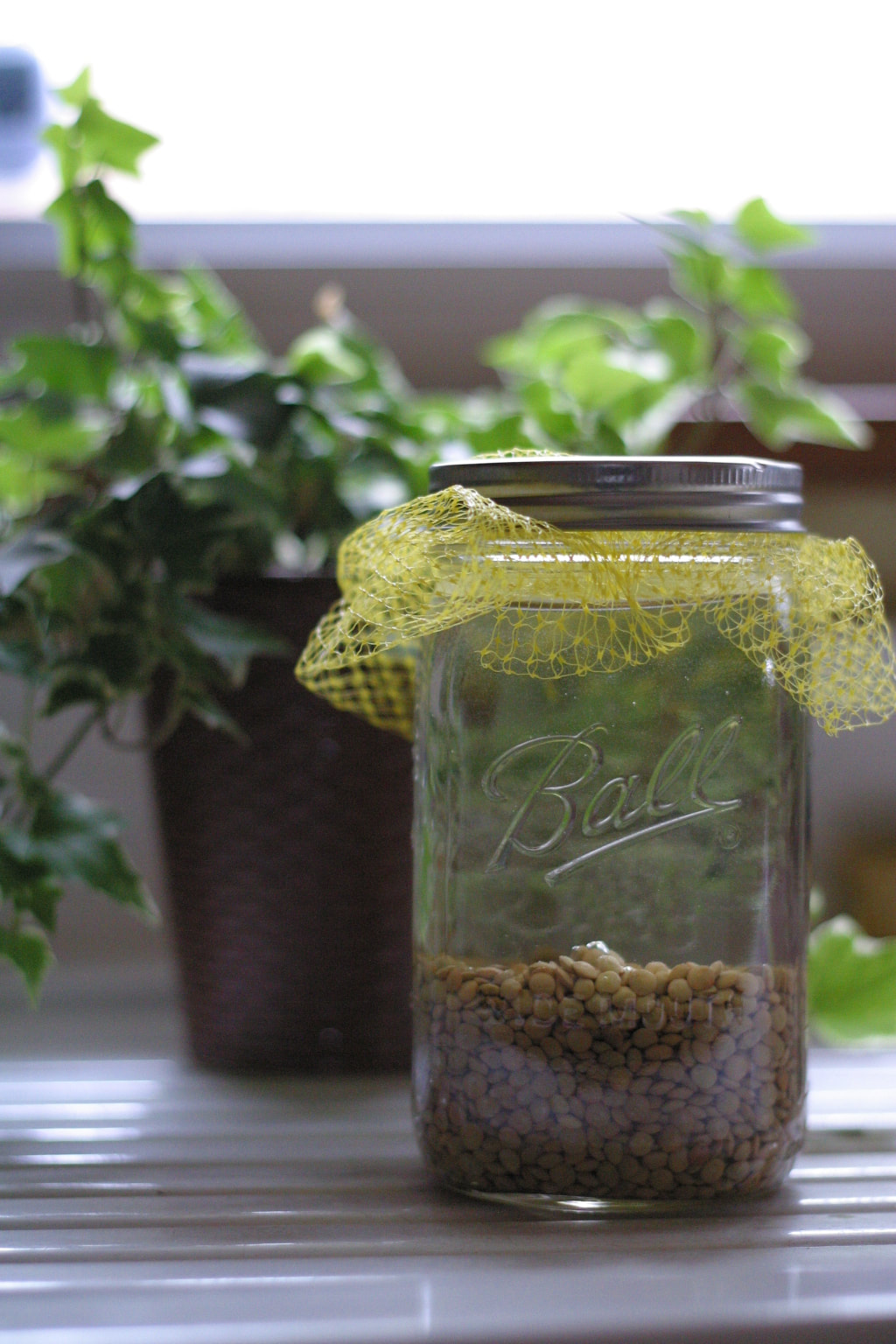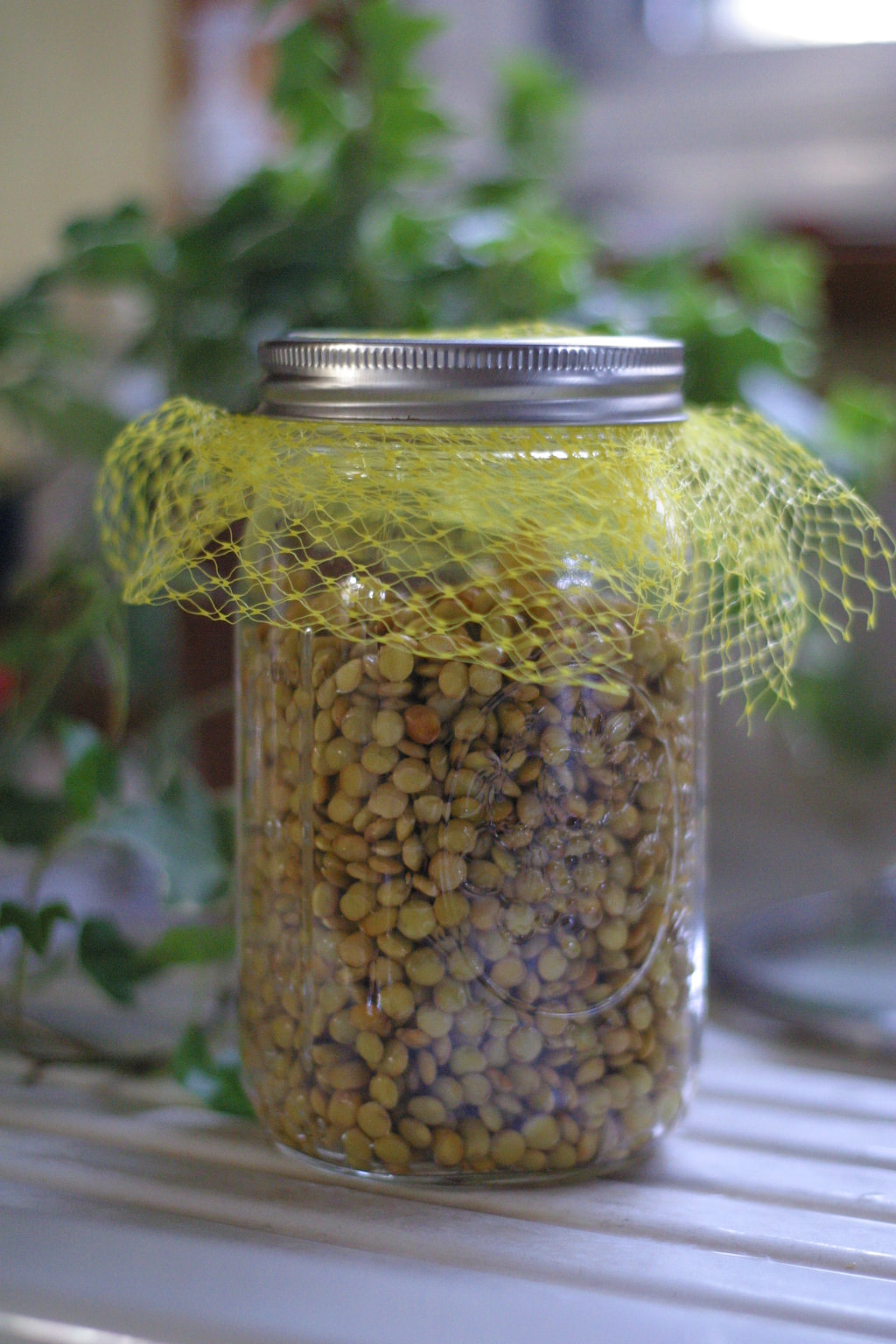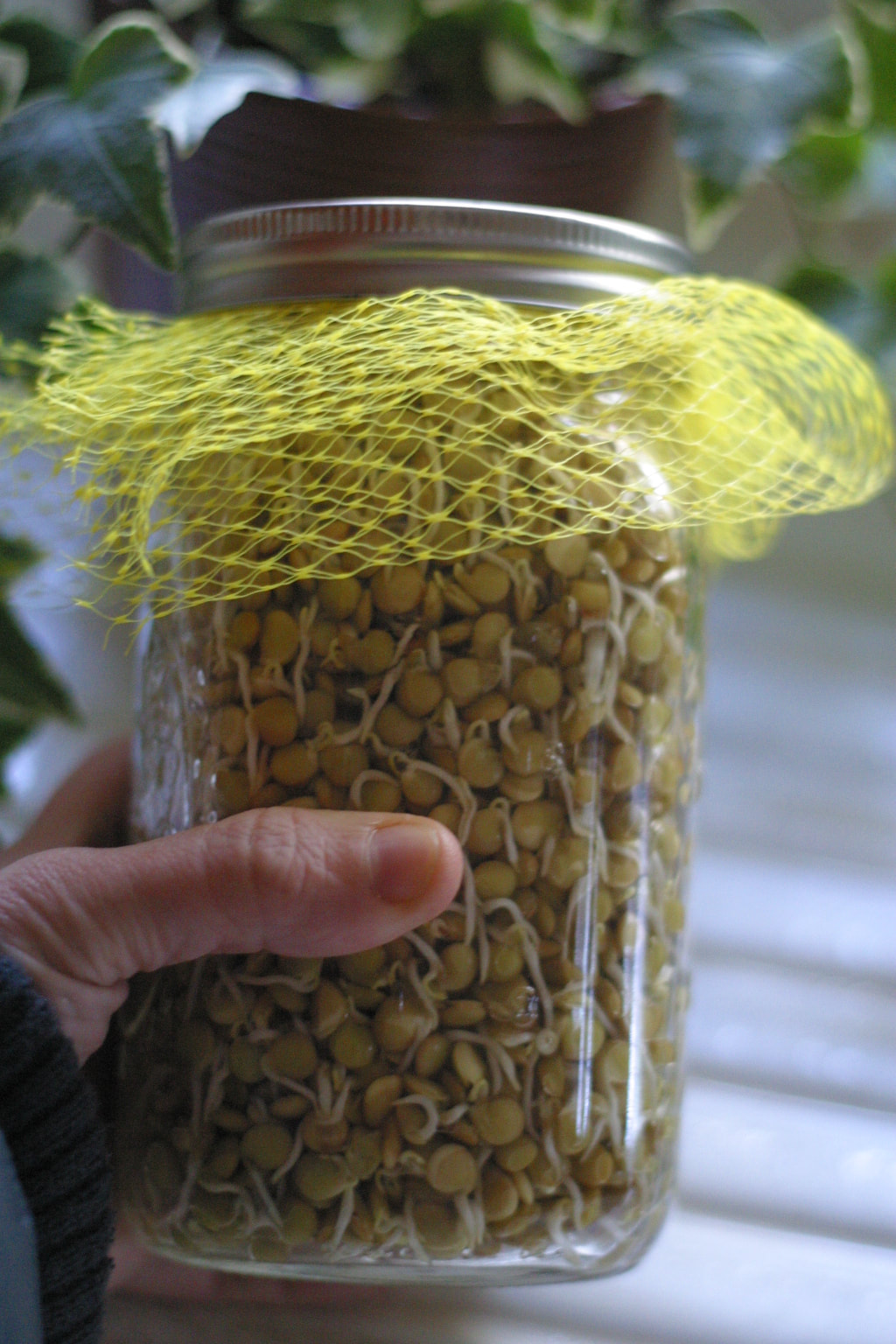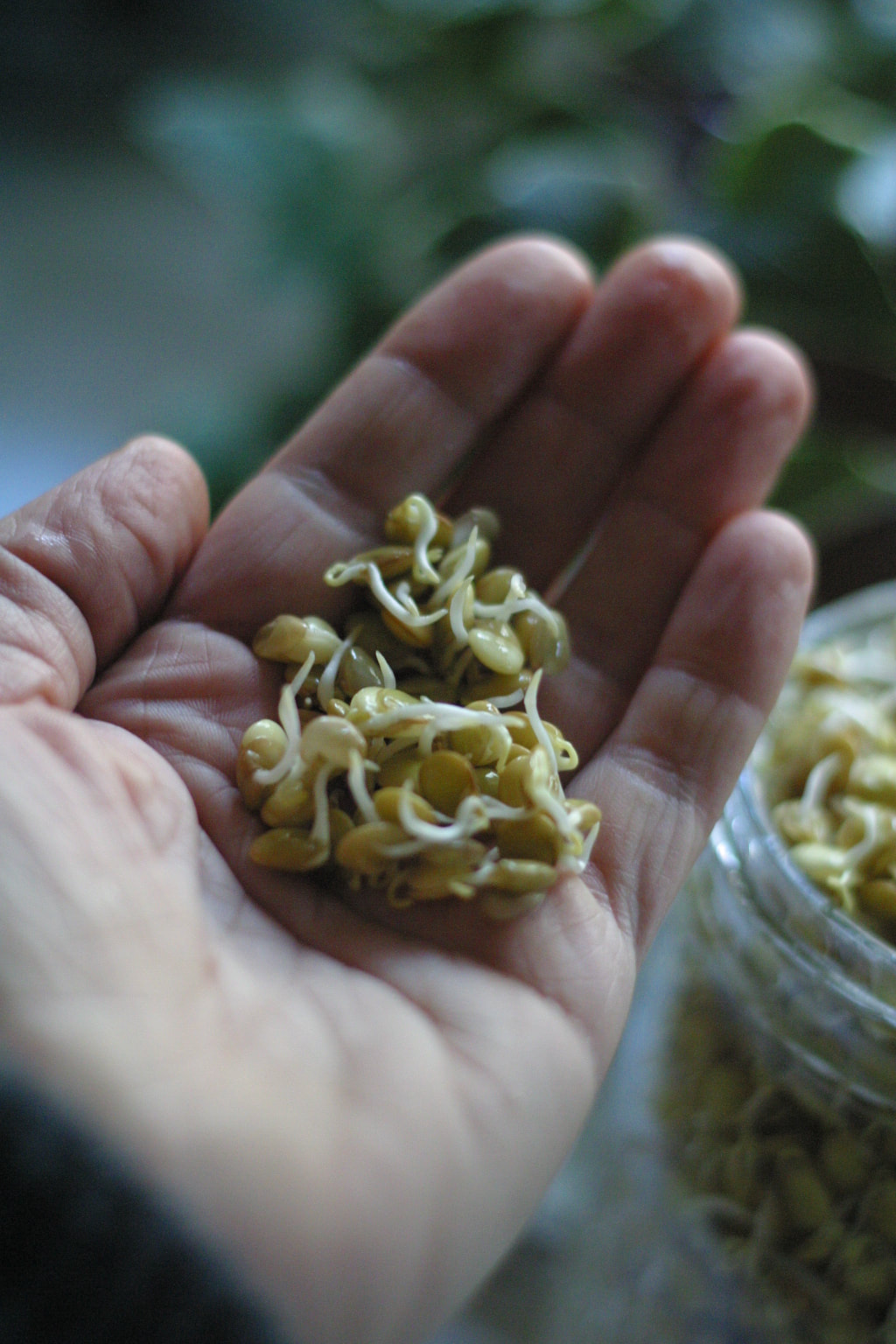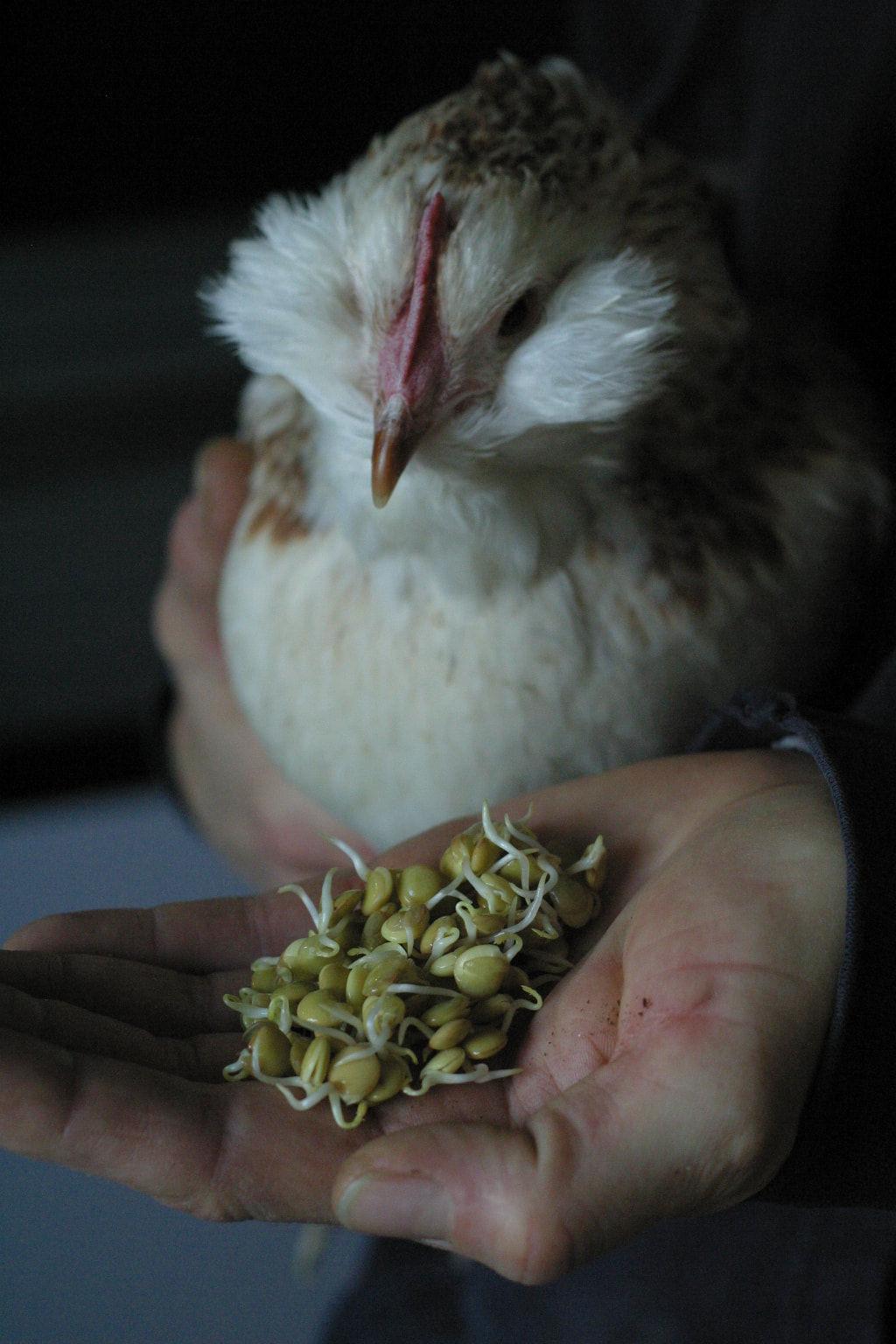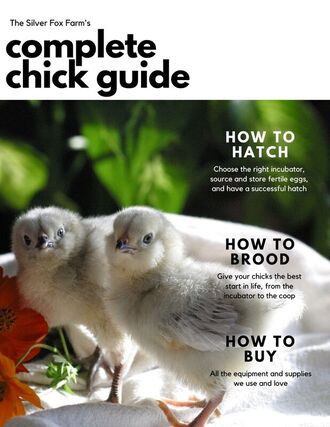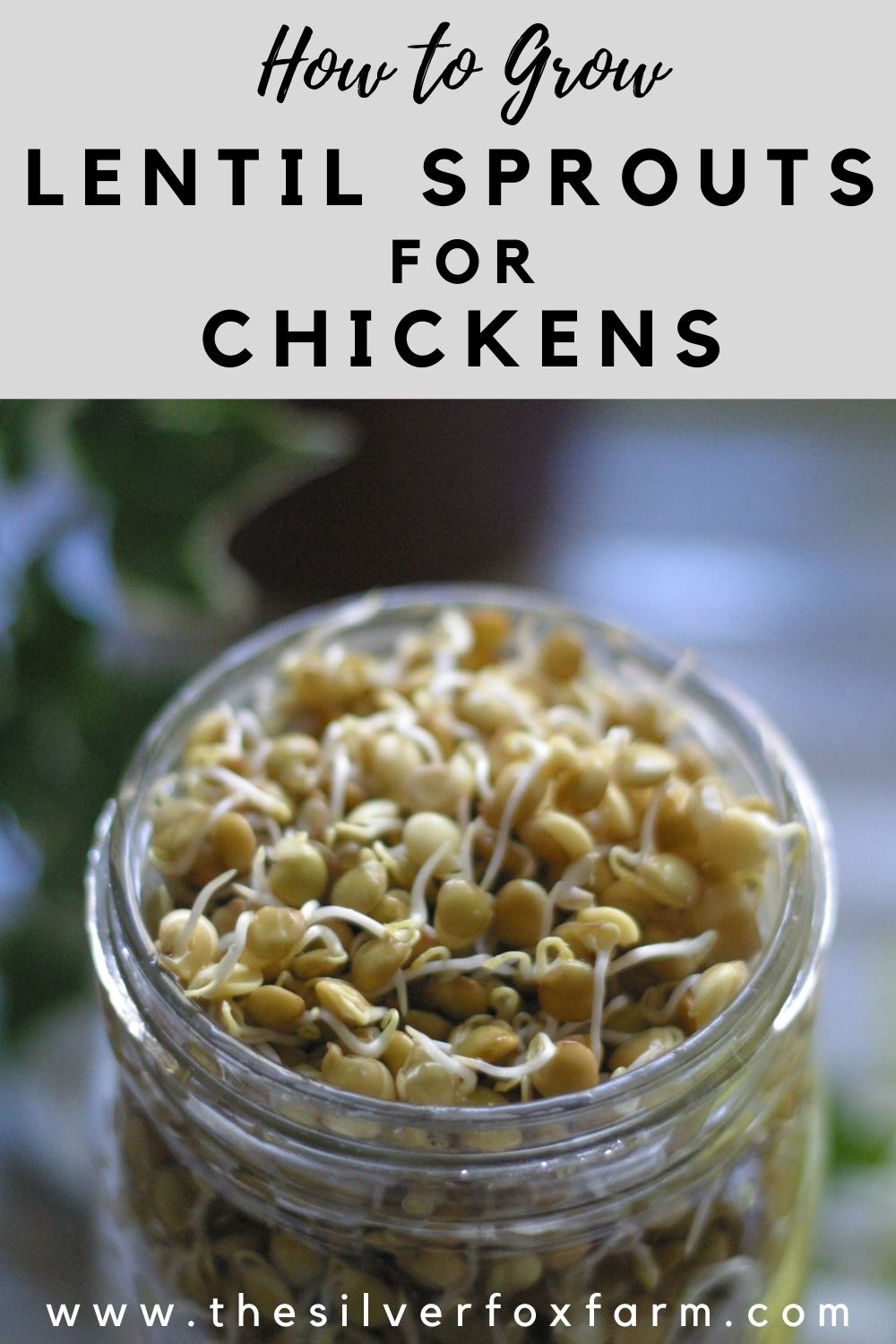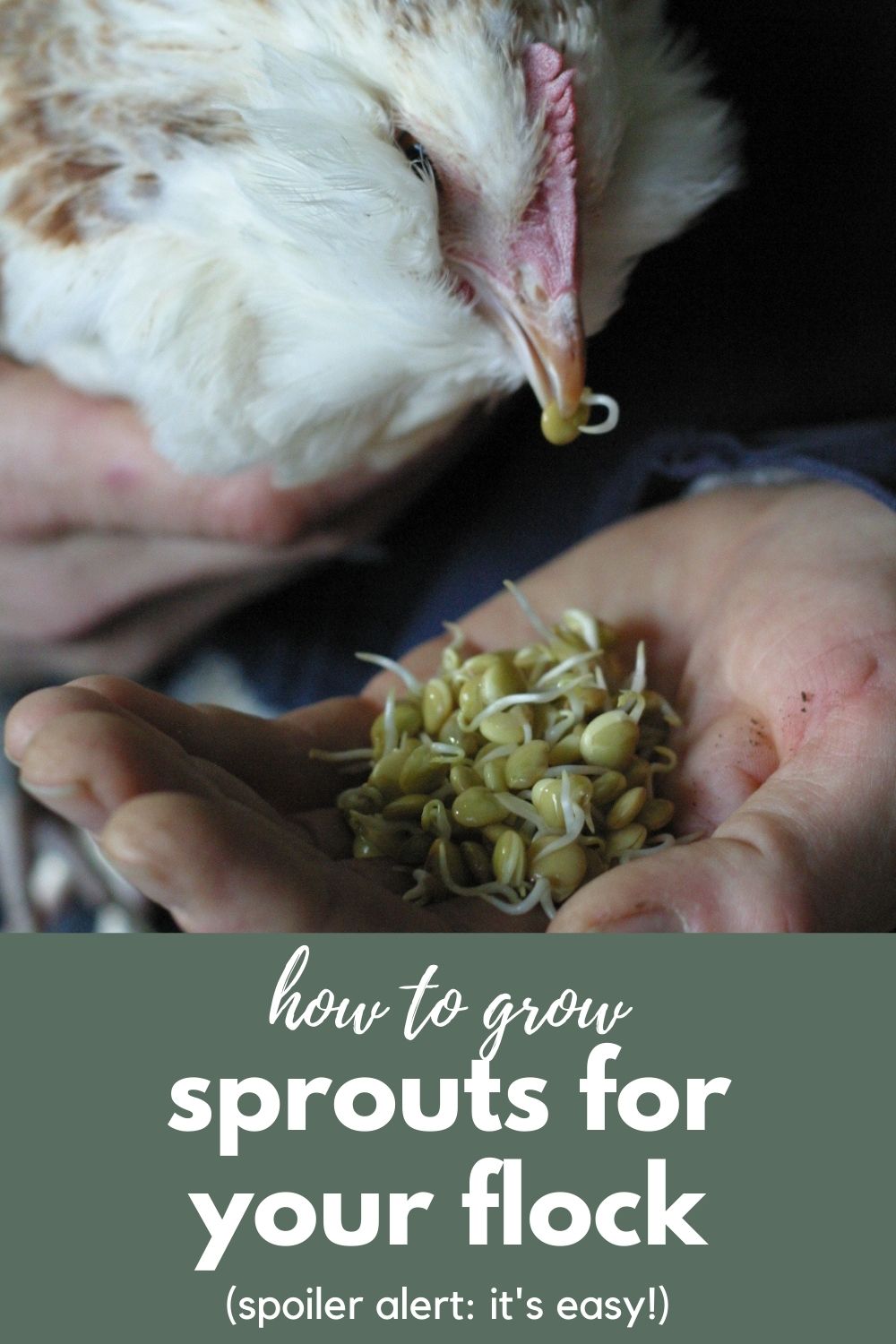|
Here in Western MA, where our farm is located, winters are often tough and unpredictable. We can experience everything from sudden spring-like temperatures to blizzards in the same week. There is one constant, though: a lack of greenery, with no pasture or forage available to our flocks. When winter has killed off everything but the pines, we pamper our chickens with sprouts. Nutrient dense sprouts are great for our birds all year round, and they are the perfect way to give our chickens the greens they are craving during the coldest months of the year. The best part? Sprouts are INCREDIBLY easy to make yourself, and in this post I'll show you how. What Are Sprouts, and Why Are They Good For Chickens? Sprouts are simply germinated seeds. The germination process increases the nutritional value of the seed, making sprouts a nutrient dense way to provide fresh greens for your chickens during the winter. During germination, nutrient levels in the seed/sprout increase significantly, in some cases as much as 300%. Wow! Not only that, but germination breaks down phytate in the seed, a substance which makes it more difficult to absorb vitamins and minerals. Because of these transformative aspects of the germination process, sprouting increases the amount and availability of nutrients such as zinc, magnesium, iron, Vitamin C, and B vitamins. What Kind of Seeds Can I Sprout for My Chickens? We are partial to sprouting lentils for our birds, because they are easy to find and affordable (I’ve found them for as little as one dollar a pound). If you decide to use lentils, just remember not to buy split lentils for sprouting, as they won’t germinate. Other great sprouting options for poultry include red clover, alfalfa, mung beans, barley, or wheat berries. You can purchase sprouting seed mixes just for poultry online or at your local feed store, but they’re often pricey in comparison to buying grains or legumes at your local grocery. No matter what you choose, though, the basic sprouting process outlined below is the same. Let’s Talk About Anti-NutrientsBefore we start sprouting lentils, let’s get an important PSA out of the way: uncooked legumes are toxic to chickens, and people, too! How can that be? It’s just a little ol’ bean, right? Well, yes. But all legumes contain anti-nutrients (the legume family includes lentils, peas, chickpeas, beans, soybeans, and peanuts). Phytate, mentioned above, is an anti-nutrient, as are lectins, a group of anti-nutrients commonly found in legumes. Anti-nutrients make it more difficult to absorb other nutrients (generally in the same meal in which the anti-nutrients are consumed), and they also cause food poisoning. Just a few raw or undercooked kidney beans can cause vomiting and diarrhea in humans. Fortunately, both sprouting and cooking break down these anti-nutrients, making sprouted lentils safe to eat for birds and humans alike. To keep your birds safe, check that there are no unsprouted duds in your batch before sharing them with your birds. In addition, avoid sprouting large beans such as kidney beans or fava beans. The thinking here is that it takes longer for the anti-nutrients in larger beans to break down as they sprout, and you might end up feeding them to your flock prematurely. How to Sprout Lentils for ChickensSprouting lentils for chickens is easy, and the whole process only takes about four days. Step One: Gather your supplies. You will need:
The container you choose will depend on the amount of sprouts you’d like to get from each batch. One cup dry lentils can produce as much as 8 cups of sprouts, depending on how long you allow your sprouts to grow. In the batch I made for this post, one cup of lentils became four cups of sprouts in three days. Step Two Place the lentils in your container and cover with several inches of tepid water. Place cheesecloth or mesh over your container and soak for 8-12 hours. Step Three Drain the water from your container, then add more water, swirl to rinse, and drain again. If possible, tip your container at an angle upside down for about an hour after rinsing. This will allow all excess water to drain from the container and prevent mold growth, while still keeping your lentils just damp enough to trigger the germination process. Rinse and drain lentils twice per day. Note: Discard sprouts if you see mold at any point in the sprouting process. Step Four Continue to rinse and drain your sprouts twice per day, until they reach the desired length, at which point they are ready to serve. I typically give lentils 3-4 days to sprout before feeding to our flocks. If your chickens won’t be eating the sprouts immediately, put them in the fridge. This will keep them fresh and halt their growth, keeping them at the desired length. You can safely store sprouts in the fridge for up to one week. How Long Should My Sprouts Be? As we mentioned above, make sure that your lentils have all fully sprouted before feeding them to your birds, to make sure that the anti-nutrients have had a chance to break down. Nutritionally, the ideal time to use sprouts is when the sprout has reached the length of its seed. Sprouts are at peak nutrient levels at this point. Beyond that, sprouts begin depleting nutrients in order to keep growing. Once your sprout hits the two inch mark, it’s a seedling. Still perfectly fine to eat, but with less benefits in comparison to the nutritional powerhouse of a little sprout. So, the best time to use sprouts is anytime from when they are the same length as the seed, up until two inches long. In ConclusionIt’s true, sprouting lentils for your chickens is really that easy, and it’s a simple way to keep your birds happy and healthy when the ground is covered in snow. If you decide to try growing sprouts for your chickens this year, please let me know how it goes. And as always, feel free to ask any questions in the comments below!
20 Comments
Carrie
2/23/2022 08:55:35 am
When can I start feeding these to my chickens? They are currently 2 weeks old. Do I need to wait until they are older?
Reply
Hi Carrie!
Reply
Lee
3/7/2023 01:46:37 pm
Thanks for great article. I have some lentils growing and just started feeding to the girls. How long will they last on the counter with daily rinsing? Should I put them in the fridge? Thanks
Reply
Shannon
3/10/2023 01:18:56 pm
I have around 20 chicks, 15 ducks, 6 guineas & one fat turkey. Any idea how much seeds would be a good serving for the flock? Thanks
Reply
Vivian
6/12/2023 08:29:52 am
If it was me I would start with one and see how fast it disappears and if all the birds act like they get a bite. Also see who won't touch them and don't count them in when making. You will need to start new batch every couple days so you have a continuous feed during the time of need.
Reply
Richard Ruiz
5/8/2023 03:33:56 pm
So I tried sprouting lentils for the first time. However it has been over 5 days and they look pretty much the same from when I first started. I think maybe I left them soaked for too long. I meant to leave them over night and forgot about them so I did them at night and didn't get back to them to drain them till after work the next day, like 6pm. Every day, two times a day after that I would rinse them with water. But it has been 5 days and exaclty the same as day one.
Reply
Vivian
6/12/2023 08:25:48 am
If you see nothing of any growth, my opinion is that they are water logged and won't sprout. Ditch then and start over.
Reply
Martha woody
11/24/2023 05:08:50 am
Mine starts sprouting the next day
Reply
J Shepherd
5/13/2023 11:35:52 am
Do I keep water in the jar after about 3-4 days? Or do I just keep rinsing them and drain?
Reply
Vivian
6/12/2023 08:24:26 am
Soak in the water as stated in the directions and then drain. That original soak is to swell the beans back to original size, like you just picked them. After that rinse and drain twice a day as stated in directions.
Reply
Norma
5/13/2023 02:10:19 pm
Wondering when sprouting lentils how can I tell which ones did not sprout so I will need to toss them
Reply
Vivian
6/12/2023 08:22:05 am
Have you ever bought a bag of dried beans to cook? you spread them out and look at each individual bean to make sure it isn't hallow, more then dry, or it is a rock. Do that gently with the sprouts and everything should be ok.
Reply
Melissa
5/13/2023 08:43:59 pm
Hello,
Reply
Vivian
6/12/2023 08:20:13 am
I have found that most animals won't or don't over eat. They stop eating when they are satisfied. They then go take a nap go for a swim or look for something different to nibble on. I wouldn't worry unless feathered friend starts getting "fat".
Reply
Vivian
6/12/2023 08:17:16 am
I am 75 and worked with animals and kids for 65 years. I am answering some questions as I see and feel the answer to be correct.
Reply
Vickie Lynn Phelps
9/16/2023 01:22:56 am
I have been feeding my free ranging flock of 6 Saphire Gems and one Rooster a mix of split peas, red split lentils and a brown lentil for over a year now. A couple handfuls at a time and they are big, beautiful and healthy. Not sure why they haven't dropped dead according to what I have been reading. Thank God
Reply
Rhonda
6/5/2024 04:30:00 am
Do you sprout them?
Reply
Carolyn Tomko
11/13/2023 08:07:17 am
How often should you feed them lentils in the winter?
Reply
Leanne
4/19/2024 10:58:06 am
Hi, I have made a large batch of sprouted lentils to feed my many chickens. I can't possibly pick through and pick out any that haven't sprouted. How toxic are they? Should I be worried if they eat a few that have gone through the process and not sprouted? Or is this the kind of "toxic" like, if a chicken ate 3 pounds of unsprouted lentils they might get diarrhea? Thank you.
Reply
Niko
7/6/2024 08:37:26 pm
Chickens cannot digest raw lentils. You should have already sorted thru them before you started the sprouting process so a second time shouldn’t be too daunting
Reply
Leave a Reply. |
Hi, I'm Maeg.Welcome to our blog! Categories
All
|
©
The Silver Fox Farm

